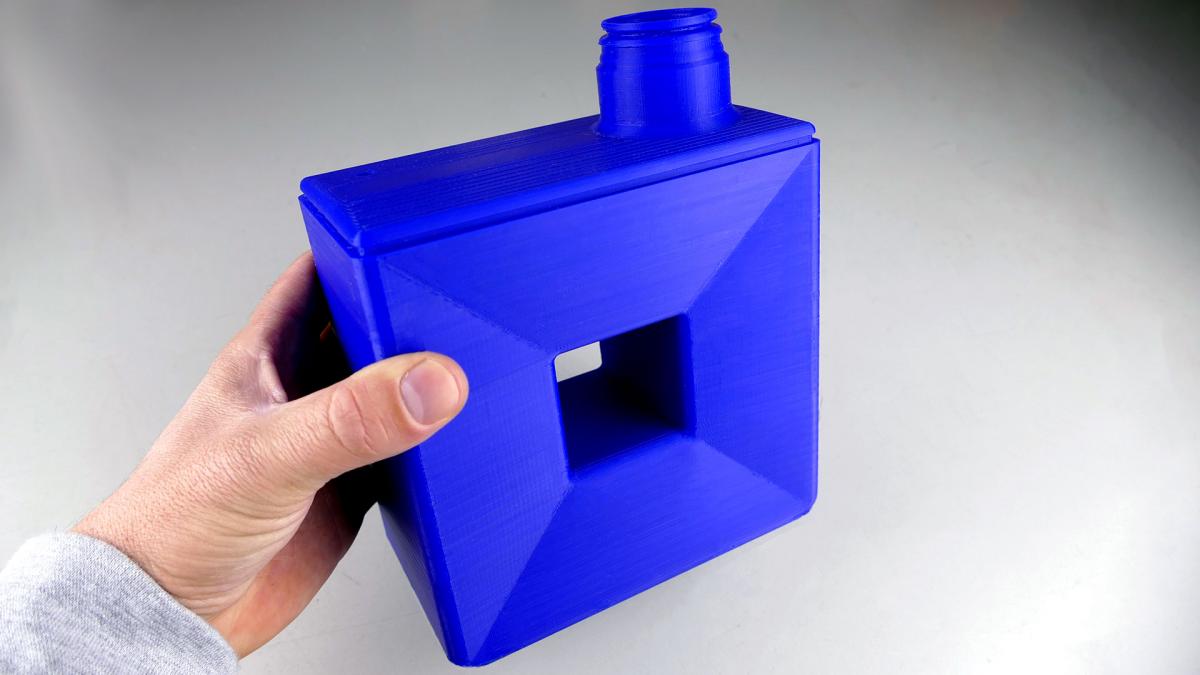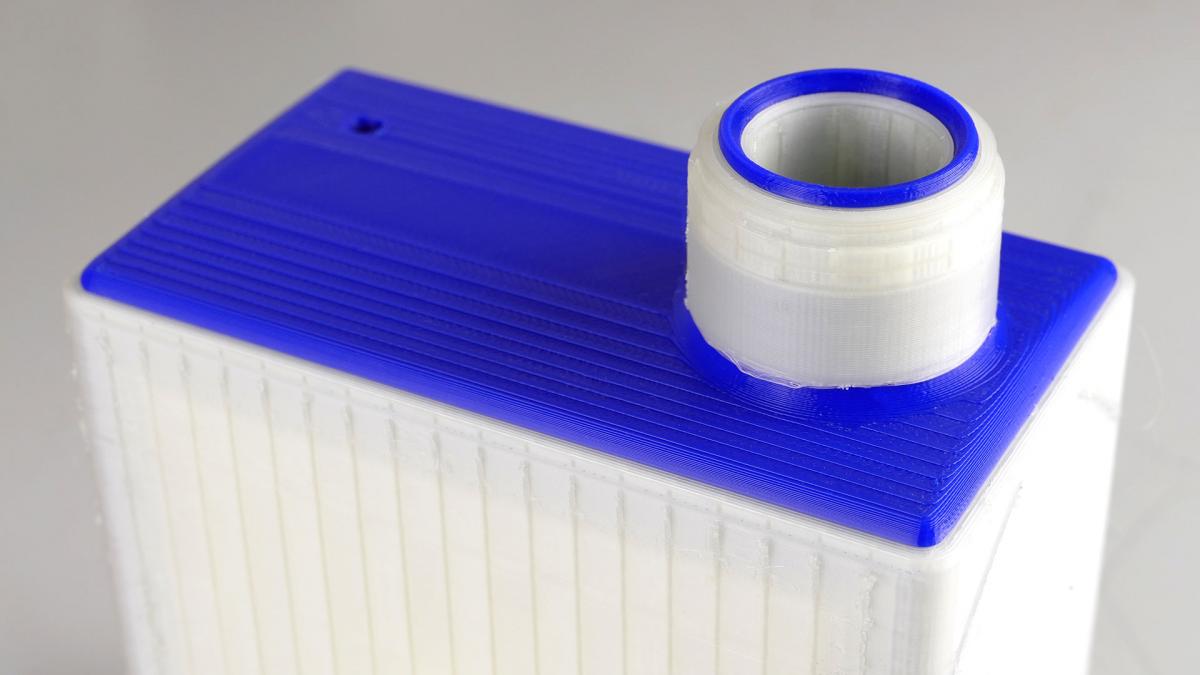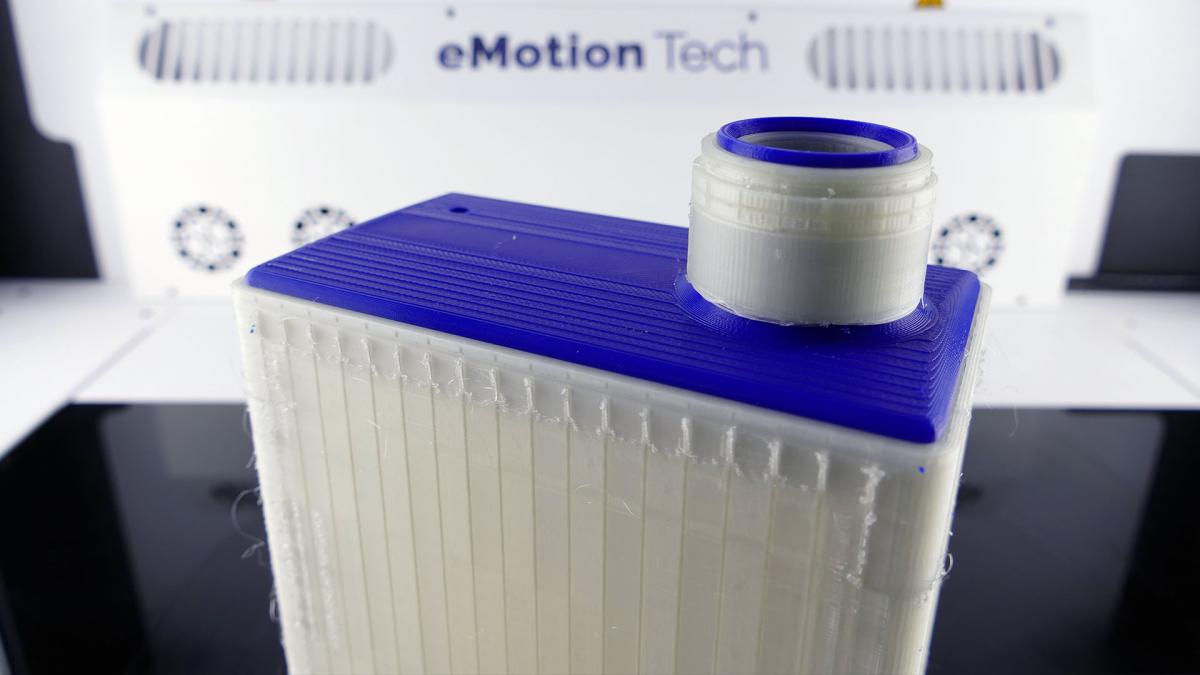
- What was your first need?
We had to manufacture a presentation part which was quite voluminuous, a supply bottle for a French start-up which manufactures a connected pot.
- How the bottle has been modelled (firmware)?
We have designed it on Topsolid.
- What material was used to print the bottle, and for which reason?
PLA was the appropriate material because this one is pretty easy to print. It has its limits, of course, but the part was only dedicated to present the model, not for its functionnal use, so it wasn't necessary to print it with a specific technical material. Furthermore, PLA has been combined with BVOH, a soluble material, with dual extrusion, in order to have the inner part of the bottle similar to the modelisation, and for the supports to be totally taken off, leaving no remains.

- How did you determined the various manufacturing settings (layer thickness, POSITIONNing, infill rate, ETC…)?
We have left the eMotion Tech company make these choices, so they have printed it with a 0,3mm layer thickness, with dual extrusion.
- Did the part had to be printed in several parts? If so, how many? Printed all at once on the same bed or various prints?
The part was printed in one time, with dual extrusion to have soluble supports.
- How many time the print lasted?
This dimensionnal prototype was printed in 46 hours.

- What benefits did you see in using the Strateo3D to print this part?
The main reasons that made us use a Strateo3D to print this prototype are, first of all, its large and comfortable printing volume, large enough to print our prototype in one time, but also the dual extrusion, which allow to print soluble supports that can be taken off entirely, so the supported parts are cleanly printed.
- Could you compare it with another manufacturing method (TiMe, COsT, ETC…)
It wouldn't be possible to compare 3D printing with another manufacturing method, because we already use it in our process since a long time in order to preview our pieces. It's way better than pdf 3D because the customer really enjoy and prefers to have the prototype in his hands to validate a project.
Formerly, we manufactured our prototypes using machining but it was really more expensive and took much more time to get it.
Philippe SENECTAIRE,
L.I.G. Pichot company
